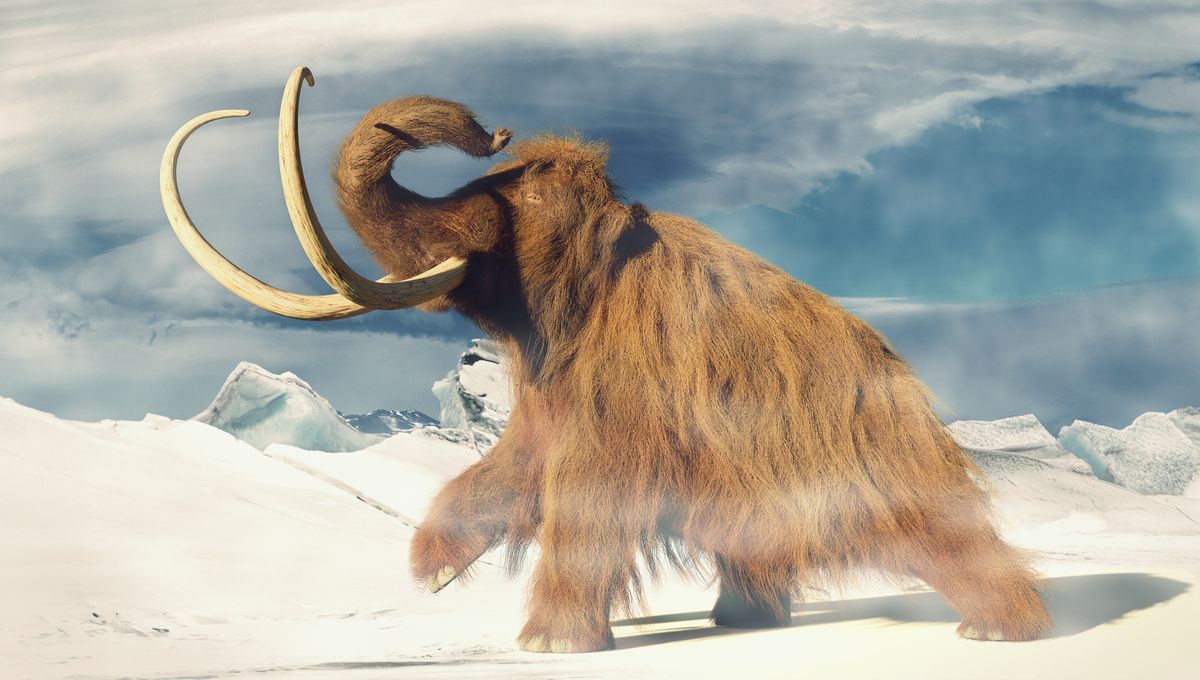
A so-called “mammoth graveyard” in Arctic Siberia has a lot to teach us about how humans and hairy elephant cousins related in the last days of the latter’s existence. Unfortunately, some of the best evidence has been stolen by ivory hunters.
It is astonishing that humans managed to live in Siberia above the Arctic Circle at the end of the last Ice Age, but the evidence is clear that, somehow, we did. One of the incentives was the presence of mammoths, which would have provided food, clothing, bones for tools, and ivory in immense quantities. A site on the Berelekh River suggests the latter two were the real priorities.
On river’s left bank at 70° 30′ North and 144° 02′ East lies a site rich with bones from at least 156 mammoths. When first examined by scientists in 1970, the concentration of mammoth remains by the river was thought to be natural. The tale of “elephants’ graveyards” where their cousins with worn-out teeth come to feed on the softest grass lacks evidence, so the favored guess was that the river had deposited bones from far and wide at the one spot.
However, more detailed investigation shows this is highly unlikely. Where the humans were thought to have arrived 50-80 years after the accumulation of the mammoth bones, research led by Dr Vladimir Pitulko of the Russian Academy of Sciences indicates that instead they coincided. The bones’ ages are too spread out for a mass extinction event, and the river flow too weak to have washed down the bodies of those that died upstream.
It seems, therefore, that humans were responsible. Unlike at some other sites, however, mammoth meat consumption is unconfirmed – there is more evidence for hare in the diet. Pitulko and co-authors conclude what made the mammoths valuable was primarily their tusks. Then as now, all that ivory was the curse of the Proboscidea.
The authors cannot be sure whether humans were killing the mammoths, or merely scavenging those that died nearby – but either way, they conclude the site was a sort of factory for processing ivory and bone. The tusks and bones considered to make the best tools were transported there for carving.
Three quarters of the mammoths at Berelekh were females, possibly because they were smaller prey, but more likely because their straight tusks were more valued than the males’ curved ones.
The bones span a period from 13,700-11,800 years, but the vast majority date to the later part of that. Large bones are at one location, while nearby there is the area where humans appear to have lived, complete with flakes of ivory produced by human modification.
The period from 12,400 to 11,800 years ago fell into what is known as the Bølling-Allerød warming, during which time pollen indicates the region would have been more inviting for humans – or perhaps we should say, less uninhabitable. The new investigation reveals the site wasn’t occupied permanently, however. Instead, people spent time there on a reoccurring basis.
Important as this site is, it could have been far more revealing. There is a report of 50 tusks from Berelekh being sold in 1947 alone. Who knows what precious insights into humans, mammoths and their interactions were lost in the process?
Today, graverobbing these mammoths would require a major effort, as the nearest (tiny) town is 60 kilometers (40 miles) away. However, at one point there was a village just 2 kilometers (1.2 miles) downstream, which is where the ivory was sold.
Many questions remain unanswered. For example, what is the source of the handful of mammoth bones deposited at the site over the course of a thousand years, before activity intensified? Did people use the site a few times a century, before increasing activity, or did the earliest mammoths die there naturally before humans decided to make their ivory-worksite on the same spot?
Although Berelekh was thought to be unique when it was found, it is now known to be just one of several such mammoth graveyards across northern Eurasia. If other sites had a similar origin, it would indicate mammoth hunting was widespread at the time. Similar conclusions, with a slightly lower rate of mammoth death per year, have been reached about the Yana Paleolithic site, also in northern Siberia.
The study is published open access in the journal Quaternary Science Reviews.
[H/T Phys.org]
Source Link: A Siberian Graveyard Reveals 800 Years Of Human-Mammoth Interactions